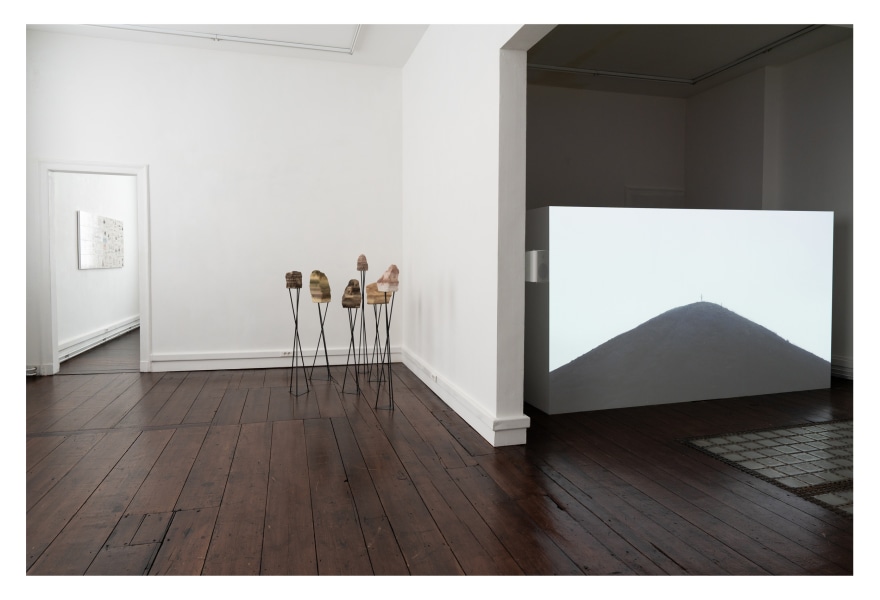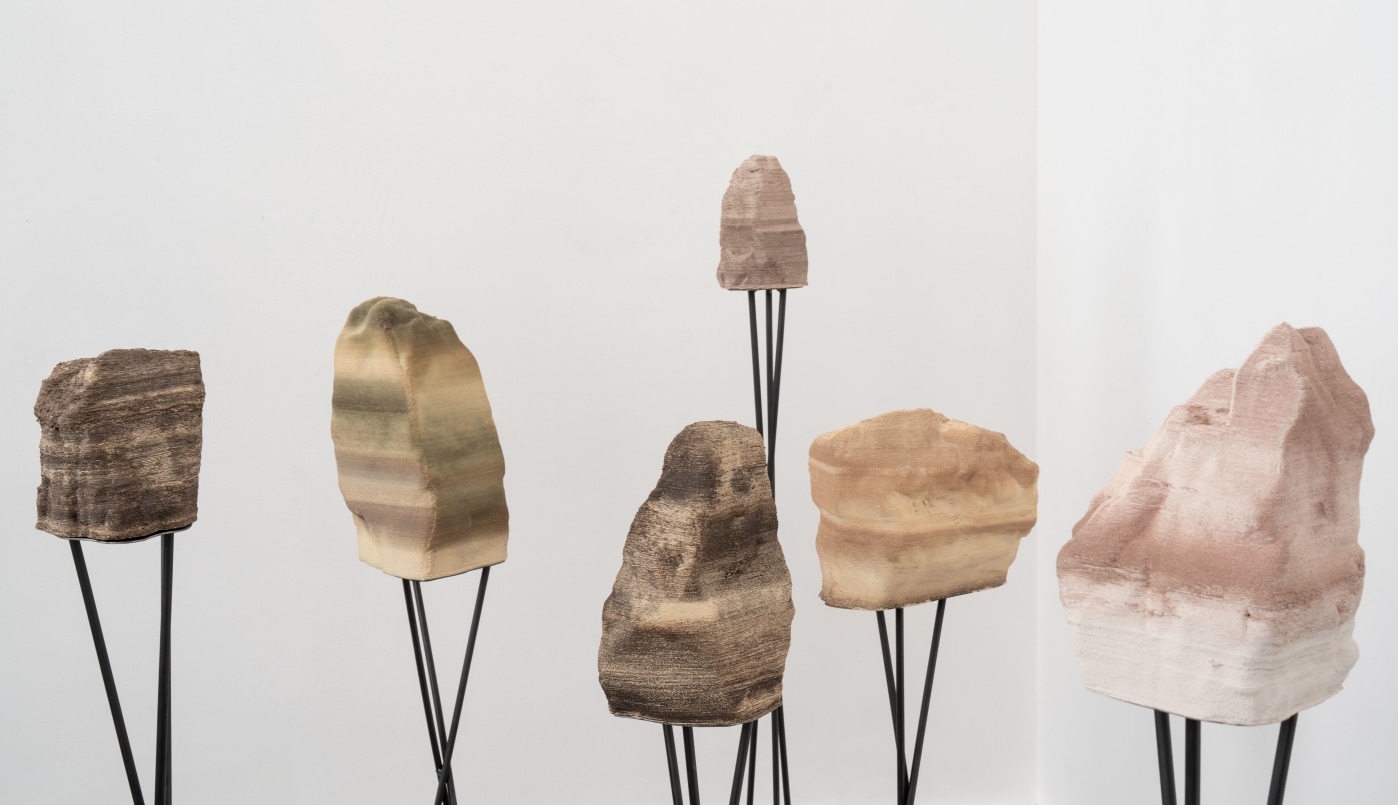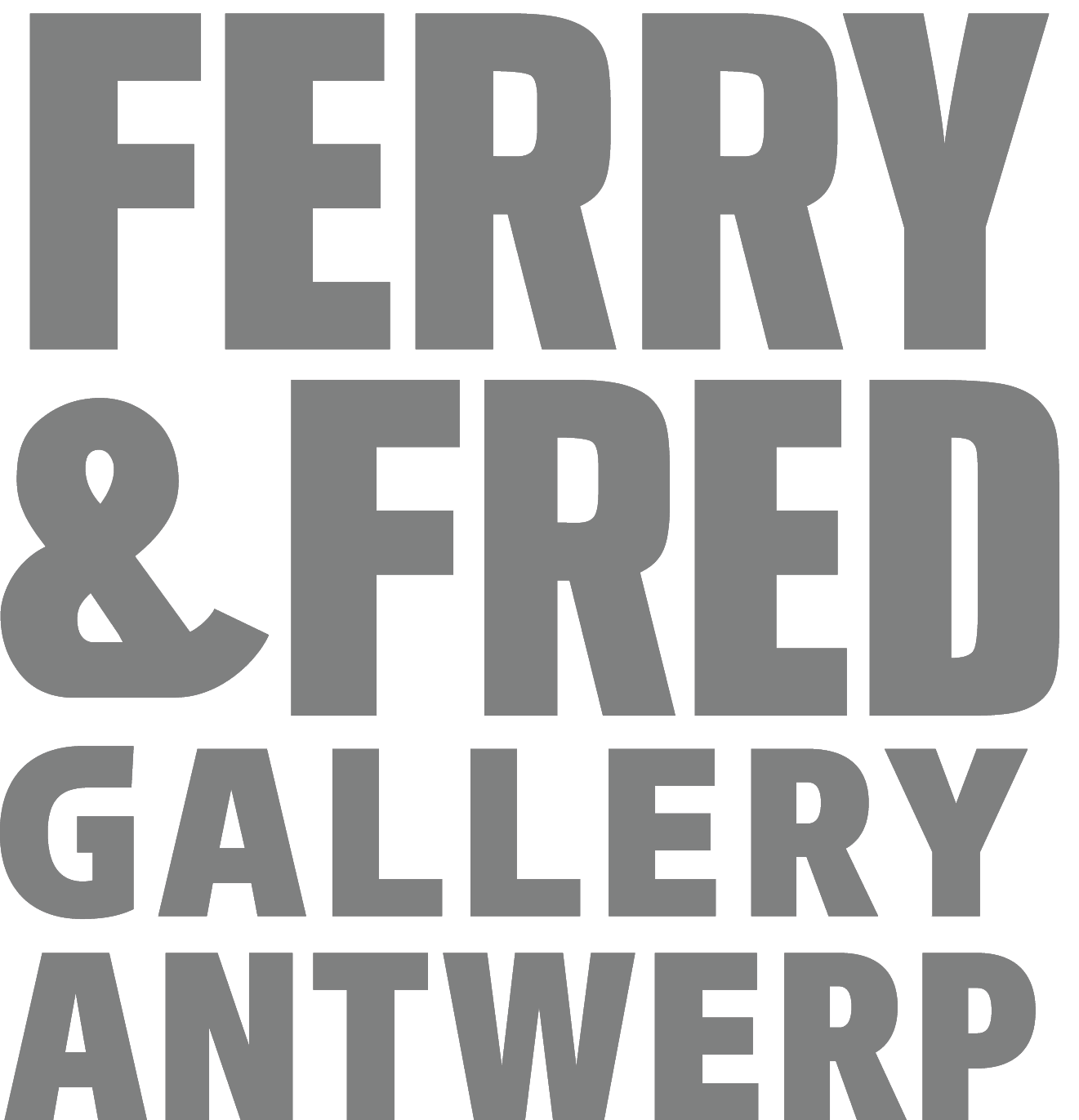10 july 2025, Indra Devriendt
Angyvir Padilla: Nostalgia as resistance

Things are moving fast for Angyvir Padilla, who has already won two prizes this year and had her first performance acquired by Mu.ZEE in Ostend. Padilla can exhibit her work at three different venues.
In 2025, Angyvir Padilla won the Marion De Cannière Prize and exhibited at the Fred & Ferry Gallery. She also shares the Ernest Albert Prize Mechelen with three other artists. That exhibition can now be seen at De Garage in Mechelen. The group exhibition What Cannot Be Held at the Flemish cultural centre De Brakke Grond in Amsterdam features her installation and performance Virgy’s Boutique (2023), which is now part of the Mu.ZEE collection.
Padilla was born in Caracas and has been living and working in Brussels since 2011. She initially intended to stay in Belgium for only a year, but the political situation in Venezuela changed that. “I started with sculpture, then continued to installations and eventually included performance.” She uses a wide range of media, such as clay, ceramics, 3D printing, textiles, photographs, video and sound. Her starting point is always stories and personal memories often her homeland. “I use materials and media to construct a narrative,” Padilla explains. “When I tell the story of my own migration, it's hard to grasp for some because they haven't lived it themselves. I seek connection with the viewer through domestic objects, elements of play and landscapes. These are familiar to everyone.””

Angyvir Padilla, ‘La ola que vino de Lejos’ (‘The wave that came from afar’) (2022), Fred & Ferry. Filmed by Michiel Venmans in collaboration with ROME Collective.
Domestic objects
For Virgy’s Boutique, Padilla was inspired by her mother's clothing shop run from the kitchen of her apartment in Caracas. She creates plaster costumes adorned with photographs of domestic corners and family portraits, taken in and around the shop that are both displayed and worn during performances. At De Garage, Padilla shows Querencia (2024), two window frames modelled after those in her grandmother’s home. The glass louvres are covered with photographs of the garden, along with hand-dried petals and flowers, with a matte glass layer blurring the view. Querencia refers to a place of safety and strength. Also on view is Home Unfoldable Home (2023), a family portrait dipped in paraffin and suspended in a metal frame. The wax acts as both skin and veil—preserving and concealing. Home becomes something that unfolds in layers of time, distance and care. Nearby, she presents Lo que no parece importante pero que siempre está ahí (What doesn’t seem important but is always there) (2023). We see toys and miniature household items 3D-printed in resin displayed on a platform of blue sand. These are carriers of shared family memories and childhood emotions. The everyday becomes an emotional landscape, with the blue evoking the sky and sea—a space in between, where the past softly lands.

Angyvir Padilla, ‘Querencia’ (2024), De Garage. Photo by Silvia Cappellari
Playfulness
Padilla often incorporates elements of play. “You can take a game seriously and play competitively—or not at all. For me, it’s a way to get past difficult experiences.” She uses play as a metaphor for life. Her installation De allá, para acá y de otros lados (From there, to here, and from elsewhere) (2021-2025), currently on display at De Garage, is based on the game of hopscotch. It features metal structures covered in clay. The space comes to life through performance where the artist sings while climbing and activating her sculptures. What remains on view is the installation, its traces, and a sound recording of that moment. Jumping and maintaining balance become rituals of movement, symbolising the oscillation between physical and mental realms. At Fred & Ferry Gallery, Padilla showed two works featuring a trampoline. In The Blue of Distance (2018), the trampoline is weighed down by a hardened mass of stone and plaster. Here, the feeling of displacement is tied to heaviness, falling and emotional burden. In the more recent video performance La ola que vino de Lejos (The wave that came from afar) (2022), Padilla walks to the top of a slag heap, carrying a trampoline up a mound of mining debris. Once at the top, she jumps on it. Facing a second, identical heap, known together as 'The Twins'. “By jumping, I try symbolically to reach and connect the two heaps.” The jumping feels like moments of detachment from the familiar, without the guarantee of a foothold. Life becomes a choreography of hesitation and surrender, between memory and future, staying and leaving. The fact that the performance is filmed in a single take underlines the authenticity and vulnerability of her attempt. Padilla demands attention without spectacle.

Angyvir Padilla, ‘La ola que vino de Lejos’ (‘De golf die van ver kwam’) (2022), Fred & Ferry
Landscapes
The trampoline video performance is part of an installation Padilla shown at Fred & Ferry. It is based on a Venezuelan legend about the origin of the mountain valley surrounding Caracas. During a residency in northern France, Padilla searched for a mountain. She reinterprets the myth in a European context by comparing it with slag heaps—man-made hills from mining regions. These heaps become emotional echoes of her homeland. The imagined mountain is a powerful metaphor, showing how her work opens up new worlds through imagination. Her memories form the contours. Slag heaps are empty mountains shaped by discarded materials that are both politically charged and ecologically reused. This duality characterises her work, which reflects the unseen and the uncomfortable, somewhere between destruction and new life. Using stones collected from the mountains around Caracas, Padilla creates 3D-printed ceramic sculptures that form a mountainous landscape on pedestals. These mental landscapes are fragmentary, fragile and with subtle colour variations of local natural clays.
Nostalgic
“Especially during my studies in Belgium and in the years that followed, many people saw my work as overly nostalgic. I felt misunderstood. The less people believed in my work, the more displaced and vulnerable I felt. But that strengthened my resolve to continue and grow in my practice. I have gradually sensed a shift and my language is starting to be understood.” The current success of her work aligns with an evolving society. What was once dismissed as too nostalgic or too personal is now recognised as a form of resistance. Padilla’s nostalgia resists acceleration, forgetfulness and hyper-productivity. Her multidisciplinary approach offers a sensory and reflective experience. It is a conscious decision to slow down, a desire for authenticity and introspection. Crises, migration flows and digital overload increase the awareness that progress isn’t always linear. Nostalgia can be seen as emotional slowness, a way to connect with what is at risk of being lost. Padilla does not long for an idealised past, but cares for lost spaces, forgotten voices and fragile emotional traces. She doesn’t revive the past, but slows down the present. “Why do we hide so much from each other? I make myself vulnerable in my work, hoping to connect with others.” Society’s appreciation for vulnerability is growing. More and more, strength is being redefined as the courage to waver. Padilla makes vulnerability visible and discussable.
Elusive
Padilla often chooses the impossible as her starting point. She doesn’t start with what is already visible, but that which lacks language. She creates space for what is forgotten, what hasn’t found a home. In her work, the impossible is not a boundary, but an invitation—to feel, connect, dream.
“Where is the world going? Everything changes so quickly. How should we behave? What does it mean to arrive and belong?” she wonders. Padilla’s work touches on a theme that is becoming increasingly urgent. Political instability, climate change and economic inequality are forcing more and more people to ask where they truly belong. Padilla’s experience as a Venezuelan in Belgium mirrors a collective narrative. People increasingly live between cultures, redefining ‘home’ as an emotional or symbolic space, rather than a fixed location.
With her work, Padilla makes complex layers of origin and connection tangible. Her installations and performances are poetic and elusive, familiar yet mysterious. We encounter fragmentary narratives and material suggestiveness. Hovering or whispering, they evoke emotions and invite the viewer to construct meaning. The performative aspects enhance their fleeting and intangible quality.

Angyvir Padilla, Las piedras del Ávilla (Avila's stones), 2021, Fred & Ferry. Photo by Lynn Van Oijstaeijen.
In-between spaces
Padilla’s work invites us to look in multiple ways—to read between the lines. Just like her jumps exist between departure and arrival, story and silence, she redirects our gaze to what we often overlook. Her work doesn’t capture facts or borders, but fragments of memory, traces and remnants. Padilla often experiments with scale, an emotional strategy that animates her themes of memory, in-betweenness and connection. She shifts between small and large, sensory and monumental, intimate and vast, personal and collective. Objects like toys, household items and 3D prints are delicate and porous. This scale creates intimacy. You have to bend down, look closely and want to touch. They are treated like skin—with care. Mountain shapes and expansive installations suggest the vastness of landscapes. In her work, scale is not fixed, but a pendulum—a rhythm that embodies the in-between. What can we still relate to today? Is that why her work touches us so deeply? We are searching for connection—between large and small, here and there, past and present.
Padilla’s work moves through in-between spaces. This doesn’t make it vague, but enables potential. She points to a transitional state, a way of being rather than a fixed label. An experience of being not quite here nor there. Something fluid—between geographic locations, emotional registers, past and present. Padilla creates in-between spaces where gravity, memory, materials, knowledge and feeling converge. Through movement, play and repetition, she searches for grounding. A trampoline, hopscotch, slag heaps: these are transitional symbols in a quest for balance. Her installations don’t offer explanations, but are choreographies of uncertainty. They create the opportunity to experience ‘not knowing’ without needing resolution. Padilla presents the in-between as a lived reality, a place where nothing is fixed and everything reinvents itself. Perhaps the power of her work lies not in what it captures, but in what it releases—in the silence between images, the leap between meanings, the state of being en route: patient, sensing, unfinished.


